June 17, 2025 | 10:37 GMT +7
June 17, 2025 | 10:37 GMT +7
Hotline: 0913.378.918
June 17, 2025 | 10:37 GMT +7
Hotline: 0913.378.918
In Vietnam, El Nino's impact has caused thousands of hectares of crops in the northern mountainous areas such as Lao Cai, Yen Bai, Bac Kan, and Ha Giang... to wither and lose productivity.
How will we adapt to El Nino in the coming period? Vietnam Agriculture Newspaper had a conversation with Nguyen Tung Phong - Director of the Irrigation Department (MARD), about this issue.
Sir, how does the agricultural industry when the El Nino returns?
With the characteristic feature of prolonged rainfall deficit on a large scale, drought, water shortage, and saltwater intrusion often occur when El Nino occurs. Typical El Nino events occurred recently in the 2014 - 2016 and 2018 - 2019 periods, causing significant impacts on agricultural production and people's livelihood.
The return of this year's El Nino is forecasted to last until the end of 2024. Remarkably, the temperature measured 44.2 degrees Celsius at the "fire pan" Tuong Duong (Nghe An) on the 7th day. On May 5, 2023, the record of the highest temperature measured in Vietnam was just set a day earlier (May 6, 2023) at the Hoi Xuan measuring station (Thanh Hoa province).
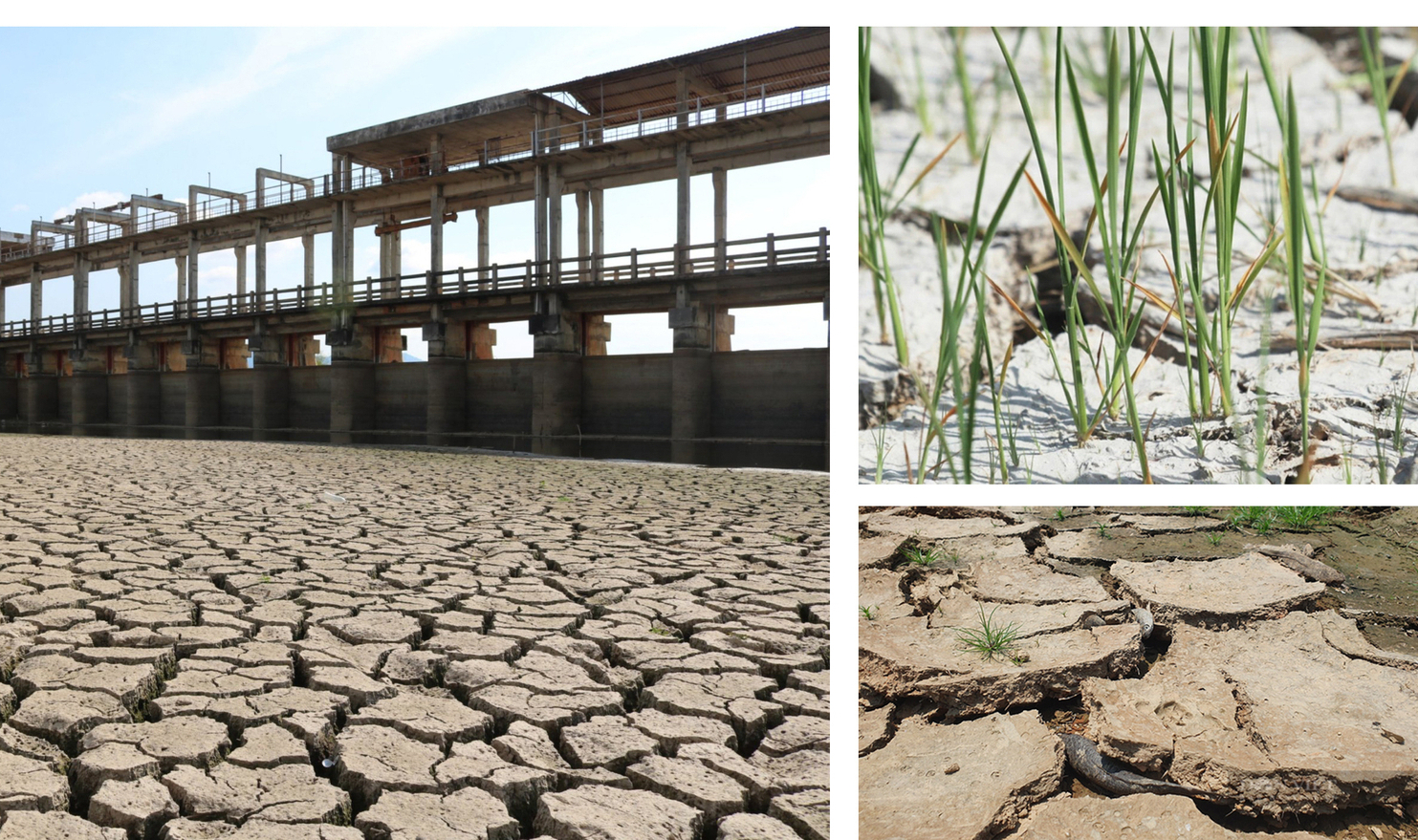
El Nino has caused thousands of hectares of crops in the northern mountainous areas to wither.
At the end of July and the beginning of August, thunderstorms and heavy rains occurred across the country, causing floods, pipe floods, flash floods, and landslides in many mountainous provinces in the North, Central Highlands, and Southeast. Flood on Dong Nai River exceeded Alert 3, causing local flooding in many areas. The Mekong Delta also has hundreds of hectares of rice and crops flooded. Some people think that, with the above rainy situation, El Nino this time will not be fierce. What do you think about this?
I think the above opinion is somewhat emotional and subjective. Because during the influence of El Nino, climate factors often have extreme changes. Typically, storms and tropical depressions are less numerous in number but frequently abnormal in intensity and trajectory and can appear very intense.
Besides, El Nino often causes a shortage of rainfall in most regions and lasts for many months. Still, it also brings records of the most significant rainfall in 24 hours in a narrow range, such as heavy rain at the end of July 2015 in Quang Ninh (rainfall at Cua Ong station of 437mm/day) or heavy rain due to storms at the end of September 2020 in Quang Nam, Quang Ngai (rainfall at Tra Bong station of 747mm/day).
So what lessons were learned in directing and managing to respond to drought, water shortage, and saltwater intrusion, sir?
From practice, the regular update of domestic and international weather forecasts and hydrometeorological information has contributed to implementing response solutions, especially the early provision of information. From the beginning, the production seasons are critical in arranging the structure of agricultural production underwater resources.
This solution is very effective in responding to saline intrusion in the dry season in the 2019-2020 season in the Mekong Delta, thereby pushing the season ahead to ensure that peak intrusion is avoided for a total of about 100,000 ha in the Mekong Delta's coastal province.
In case of drought, the regulation of hydropower reservoirs should comply with the rules of the inter-reservoir operation process in river basins. Adhere to the principle that the order of priority for water sources is supplying water for people's daily lives, serving agriculture, and then operating and generating electricity.
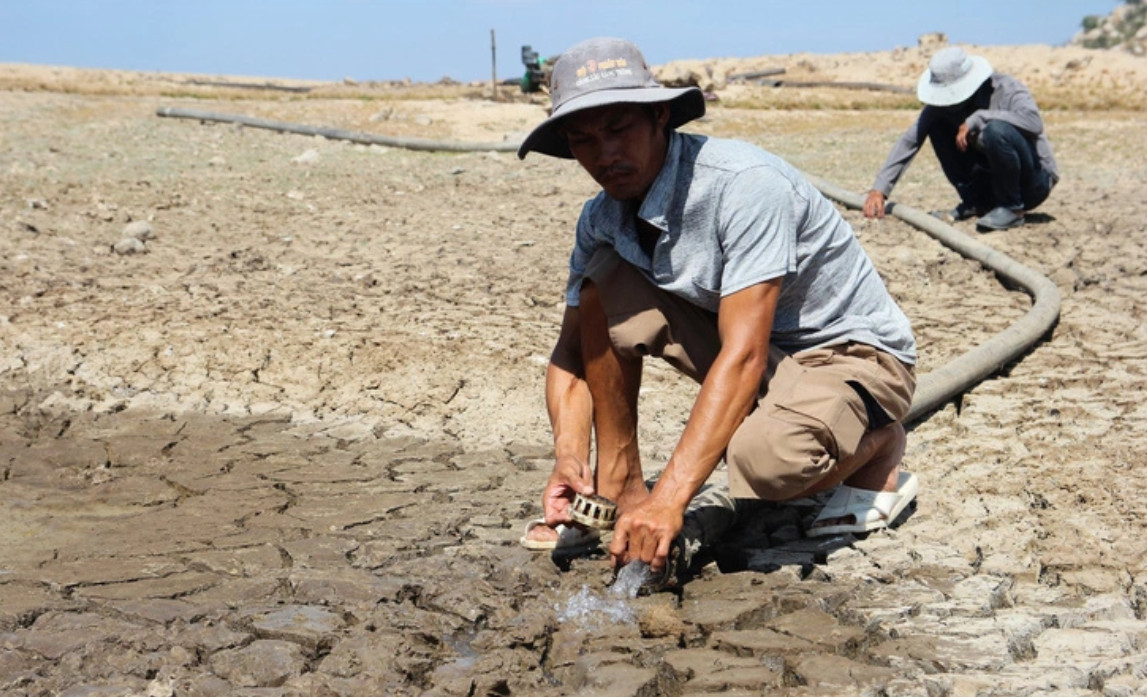
During the influence of El Nino, climate factors often have extreme changes.
Water must be balanced in agricultural production to prioritize supplying water for livestock and perennial crops with high economic value first, then annual crops. Because if a coffee or durian orchard dies due to drought, it may take up to 10 years for people to recover. A damaged rice crop can be restored in the next crop.
Although in the middle of the rainy season, the water level of the Red River is low, many pumping stations cannot take water for irrigation. So, what is the solution to ensure agricultural production for this region?
In the Midlands and Northern Delta, depending on the storage level of hydropower reservoirs in the upstream area of the Red River - Thai Binh river system at the end of the rainy season, in the event of a shortage of stored water, it will affect affecting the discharge of water from hydroelectric reservoirs to collect water for winter-spring crop in the area. However, we believe there will not be much water shortage in Son La, Hoa Binh, Thac Ba, and Tuyen Quang lakes.
For the northern mountainous area, irrigation works usually serve local areas. If any lake is too dry, people also have to accept to stop production or wait for rain to sow seeds. In some areas with water shortages, people are used to switching from growing rice to growing maize and other crops that require less water.
In the Central region, water resources depend greatly on reservoirs. So, what is the solution to adapt to El Nino in the upcoming future?
According to the National Center for Hydro-Meteorological Forecasting, the rainfall in the Central and Central Highlands regions in the primary months of the rainy season (October and November) is 10 to 25% lower than the common annual average. If the rainfall in the rainy season in 2023 reaches from 1,700 to 2,000mm (about 80 - 90% compared to the average of many years) and the operation of water storage reservoirs is done well, construction safety and storage are ensured. With the highest water volume, irrigation reservoirs can reach 100% of design capacity at the end of the rainy season.
Therefore, when operating irrigation works, it is "healthy" to store water. And if the work is already "weak," localities have no year to keep water. From March to April every year, the Ministry of Agriculture and Rural Development and the Prime Minister have issued documents and Directives requesting localities to review, inspect, and evaluate irrigation works, reservoirs, and dams. Any works that do not ensure safety must accept not to store water and have solutions to find alternative water sources.
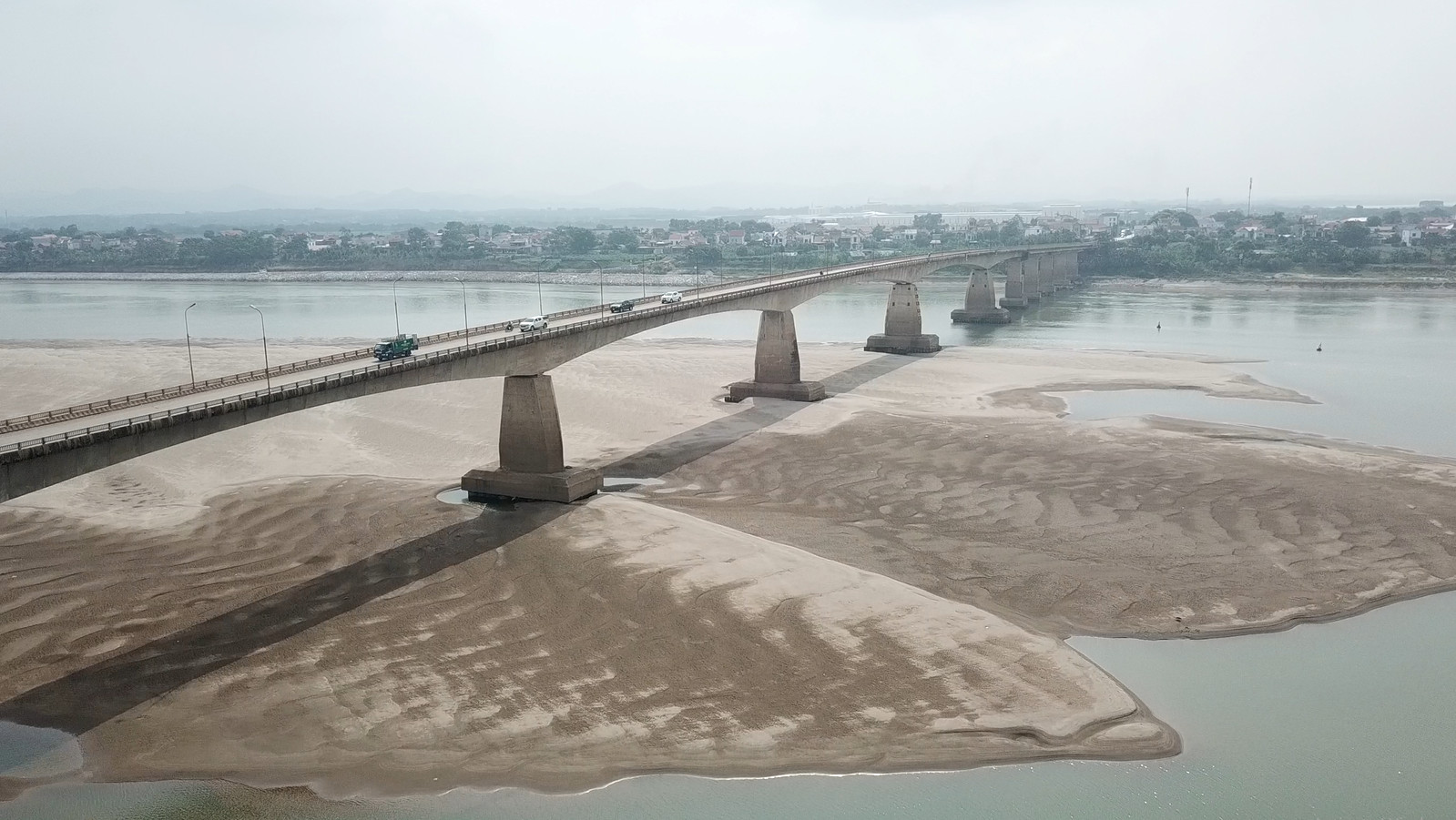
With the highest water volume, irrigation reservoirs can reach 100% of design capacity at the end of the rainy season.
In the Central Highlands and the Southeast - where the area of industrial crops and perennial plants of high economic value is the largest in the country, but the percentage of the irrigation work area is meager, how to reduce damage caused by heat, drought, and lack of water?
The characteristic of the Central Highlands is that the dry season lasts only 4-5 months, from December to the end of April next year. Therefore, the Central Highlands region is only susceptible to drought at the beginning of the year.
In case the rainy season ends very soon (from October to November), if there is no rain in the whole dry season (like the El Nino scenario in 2014-2016), the drought situation is quite stressful, especially in the Central Highlands with an area of huge production.
When this happens, the leading solution is that people have to actively store water in the short term (digging trenches, making tarpaulin tanks, etc.). However, the capacity to store water by the above solutions is limited.
Therefore, it is necessary to invest in an irrigation system to supply water directly to the base of the tree so that the soil is sufficiently moist, and at the same time, pruning branches and leaves, limiting flowering and fruiting... so that the tree can maintain its vitality. During the El Nino period, people have taken technical measures to nourish the plants to flower and restore production.
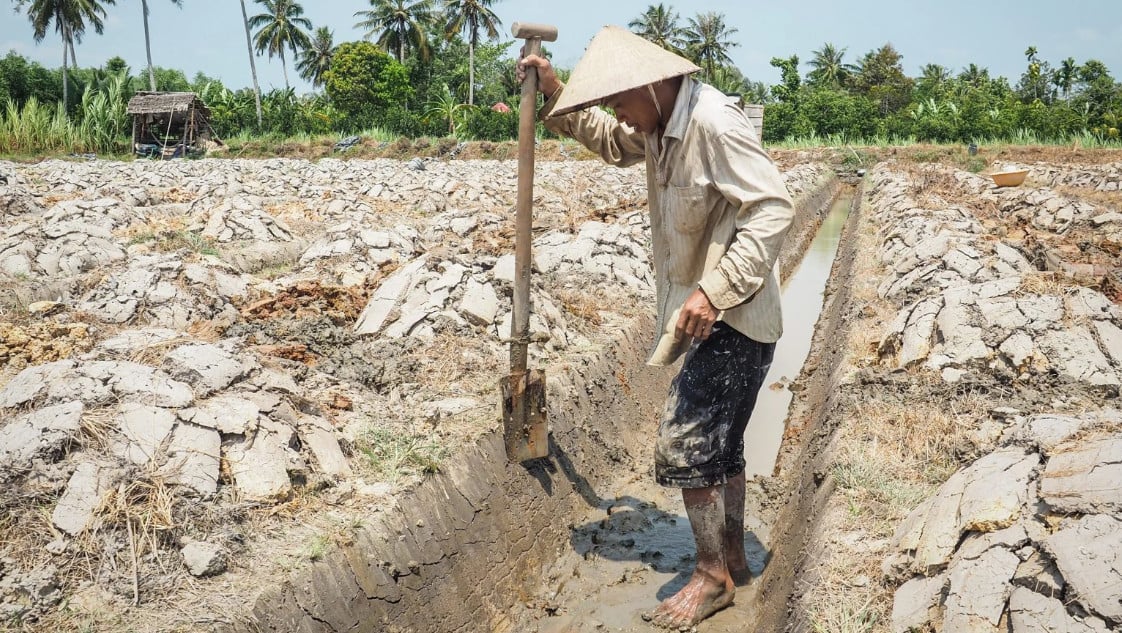
During the El Nino period, people have taken technical measures to nourish the plants to flower and restore production.
How will the severity of saline intrusion in the Mekong Delta in the dry season end of 2023 and early 2024 compare with the saline intrusion in 2019-2020 and 2015-2016?
Regarding the expected level of impact, in the short term, for some regions, one shrimp crop - one rice crop in the Ca Mau peninsula with a total area of 162,000 - 170,000 ha (starting planting from September and harvesting in January 2024), the area itself has no water source for irrigation works, mainly depends on the water from the sky.
With the forecast that the rainy season will end soon, the possibility of water shortage at the end of the winter-spring crop is about 108,000 ha, of which about 68,000 ha in Kien Giang province and about 40,000 ha in Ca Mau.
In addition, to cope with drought and water shortage, it is necessary to organize a reasonable operation of irrigation works to store water.
Digging ponds are dispersed according to household size/group of households to proactively provide sufficient minimum water demand for daily life, livestock, and perennial crops in drought, water shortage, and saltwater intrusion.
Thank you so much, Sir!
Translated by Tu Quyen
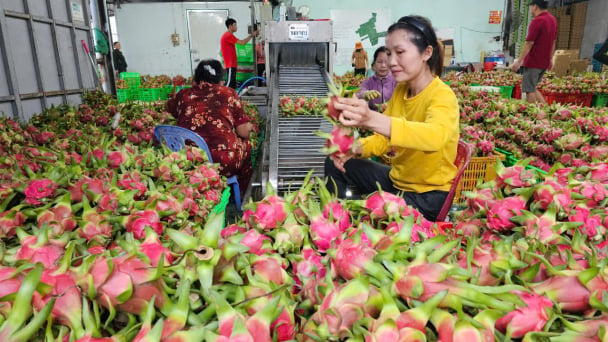
(VAN) According to the Binh Thuan Department of Industry and Trade, in the first five months of 2025, Binh Thuan's dragon fruit export turnover increased by 20.65% compared to the same period last year.
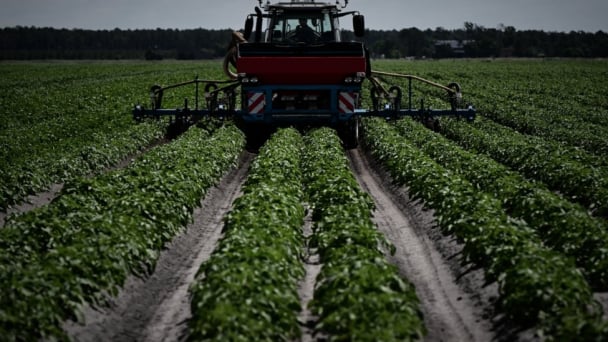
(VAN) EU countries on Thursday gave final approval to new tariffs on fertilizer imports from Russia, a move aimed at cutting off revenue that could support Moscow’s war in Ukraine, despite concerns from European farmers.

(VAN) The working delegation from the Ministry of Agriculture and Environment conducted an important trip to the Netherlands to strengthen strategic partnerships and sustainable development in the agricultural sector.
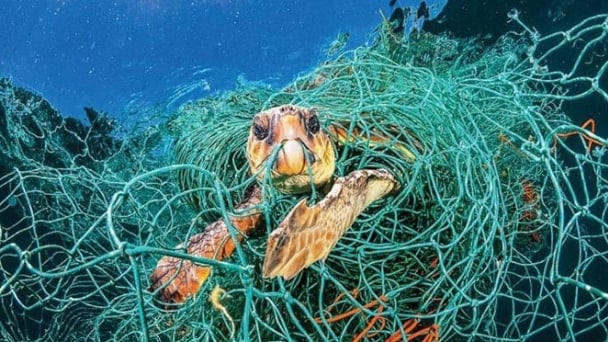
(VAN) The letter ‘A Plea from the Ocean’ not only evokes emotion but also awakens the human conscience to the responsibility of protecting life on Earth.

(VAN) The Department of Agriculture in South Africa has announced the country’s first mass vaccination of poultry to prevent local birds from contracting avian influenza.

(VAN) Establishment of the Mekong Delta Regional Agricultural Linkage Center, aiming for a closed value chain, deep processing, trading platforms, and international market connectivity.

(VAN) Gia Lai province has recently recorded 460 rare species of animals and plants, contributing to forest conservation and biodiversity planning in the region.